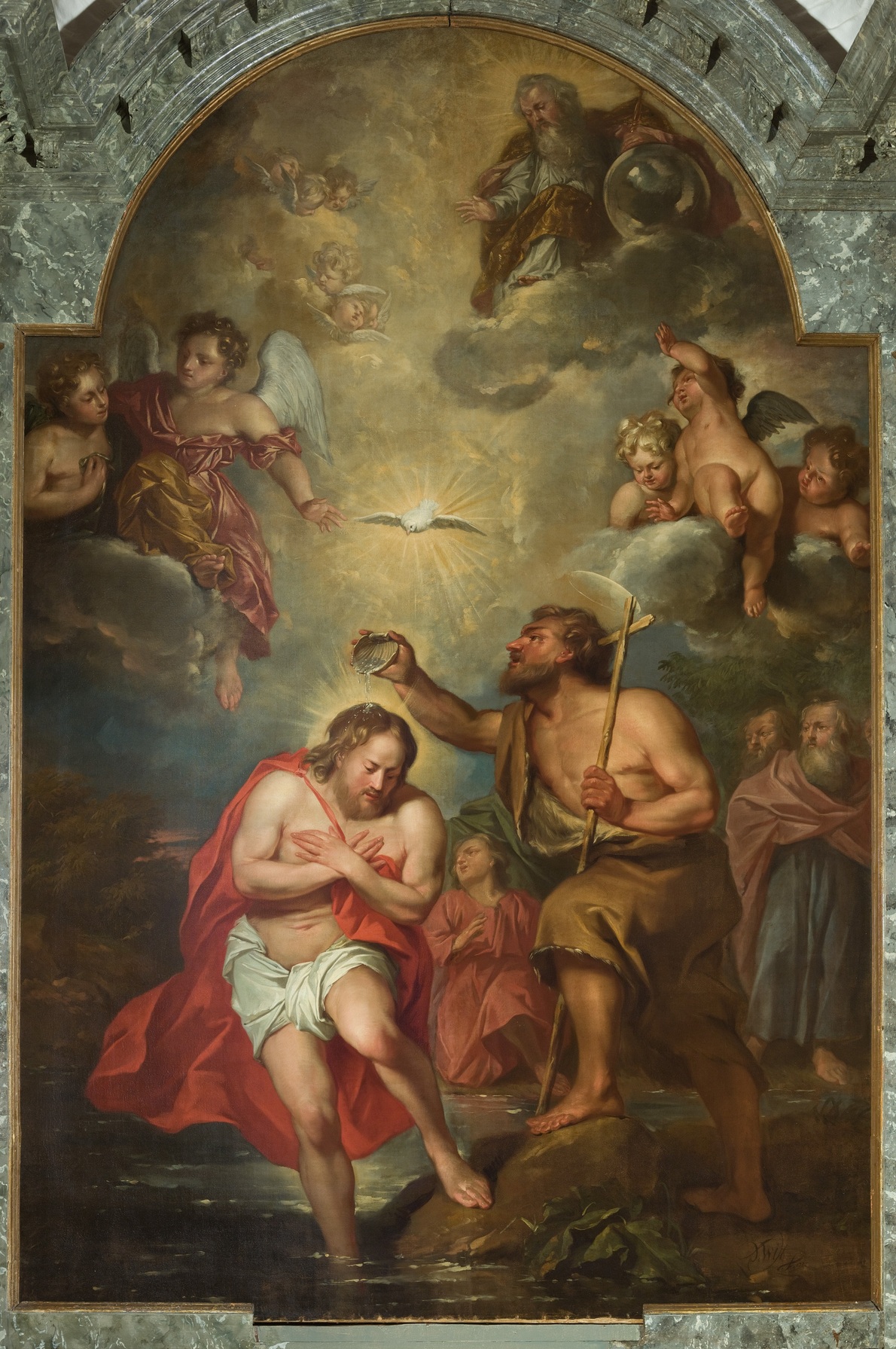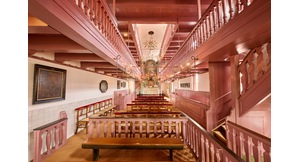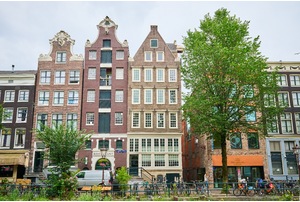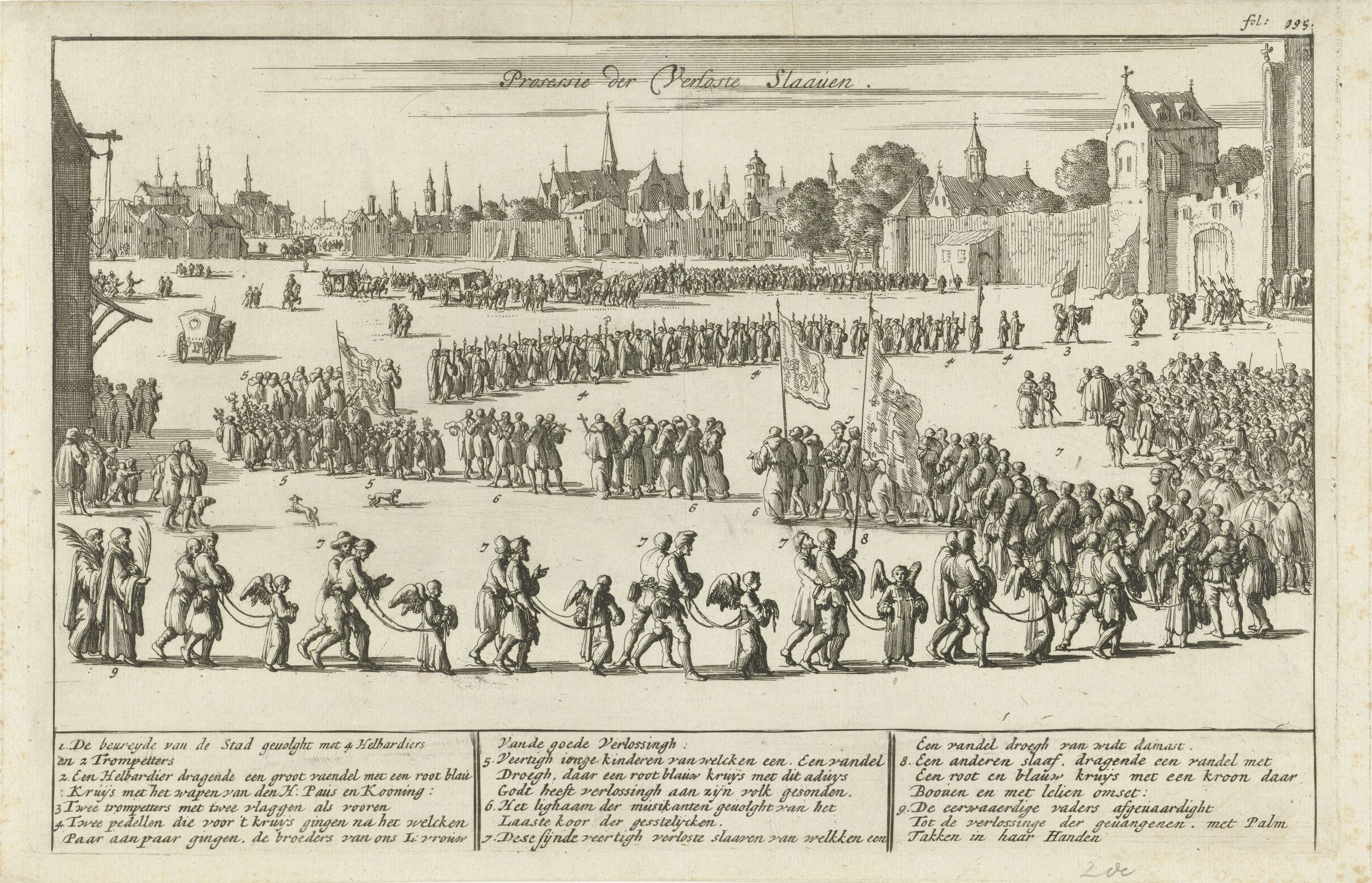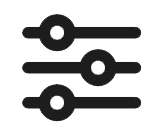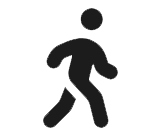In 1685, Pastor Van Schaijck establishes a brotherhood to free Christian slaves.
Location
Het Hert
Oudezijds Voorburgwal 40
Type
Clandestine church
Religious community
Roman Catholic Church
Object
Altarpiece depicting the baptism of Christ in the Jordan river
Maker and date
Jacob de Wit
1716
Visit
On display in the Our Lord in the Attic Museum
Praying for the Christian Slaves
An image of the birth, crucifixion or resurrection of Jesus Christ is often placed behind the high altar of Amsterdam clandestine churches. In clandestine church Het Hert, however, his baptism is depicted. There is a special reason for this.
On June 17, 1685, on the high feast of the Blessed Trinity and exactly one year after his appointment in Het Hert, pastor Van Schaijck (†1727) founded the Confraternity of the Most Holy Trinity for the Liberation of Slaves. At that time European coastal cities were plagued by pirates from the Ottoman Empire and North Africa. Many European Christians fell into the hands of Islamic pirates and were sold at slave markets. Within the Catholic Church, orders were founded that focused on freeing these Christian slaves. The Order of the Trinitarians is one of them. This order is named after the Trinity, because it represents a fundamental difference between the Christian and Islamic faiths. The confraternity established by Pastor Van Schaijck in this clandestine church was intended to support the Order of the Trinitarians with prayers and financial donations.
hidden church
Building in which hidden religious services were held in the Dutch Republic (1588-1795). Christian denominations outside the Calvinist church, such as Catholics, Lutherans, Mennonites and Remonstrants, had to practice their religions in hidden churches.
Baptism
Baptism is a Christian initiation ritual. The person who is to be baptised has water poured over them, or is fully immersed in baptismal water. This is done in imitation of Jesus Christ, who was baptised by John the Baptist in the Jordan River.
This prent shows a procession of liberated Christian slaves in Paris in 1641. The liberated slaves were led through the city by children dressed as angels. Trinitarian fathers regularly took freed slaves in processions through European cities. Holding processions was a method of gaining both financial support and sympathy for the work of the order. However, such Catholic processions were strictly forbidden in Protestant Amsterdam.
The Commission to the Painter
Pastor Van Schaijck wanted to put the brotherhood at the center of his church. Therefore, he commissioned Jacob de Wit (1695-1754) to depict the Baptism of Christ behind the high altar. This is not only an important moment in the life of Christ, but also the moment when the Holy Trinity is revealed in the Bible. The painting depicts the Holy Trinity vertically: God the Father seated on a cloud, God the Holy Spirit in the form of a descending dove and God the Son in the form of the baptised Jesus Christ. Thus by seeing this altar piece, churchgoers were also reminded of the Confraternity of the Most Holy Trinity.
Pieter-Jan van Giersbergen
Curator Our Lord in the Attic Museum
Last edited
April 08, 2025
Baptism of Christ, Jacob de Wit, 1716, oil on canvas. Collection Our Lord in the Attic Museum.
Interior and exterior: photography Robert Westera.
Prosessie der Verloste Slaaven, Jan Luyken, 1642, engraving. Collection Rijksmuseum.
Register of names of the Confraternity of the Most Holy Trinity, 1685. Collection City Archives Amsterdam.
Broekhuizen, G. van, Historie van Barbaryen, en des zelfs zee-roovers, behelzende een beschrijving van de koninkrijken en steden Algiers, Tunis, Salé en Tripoli […] (Amsterdam 1674).
Davis, R., Christian Slaves, Muslim Masters (Hampshire 2003).
Hout, G. van den, ‘Een vroeg altaarstuk van Jacob de Wit. Een Onderzoek naar de altaarstukken in de voormalige huiskerk ‘Het Haantje’’ in: G. van den Hout, M. Blokhuis, P. van Dael, J. Sterk eds., Vroomheid op de Oudezijds. Drie Nicolaaskerken in Amsterdam. De Oude Kerk, Ons’ Lieve Heer op Solder, De Sint Nicolaaskerk (Amsterdam 1988) 63-73.


